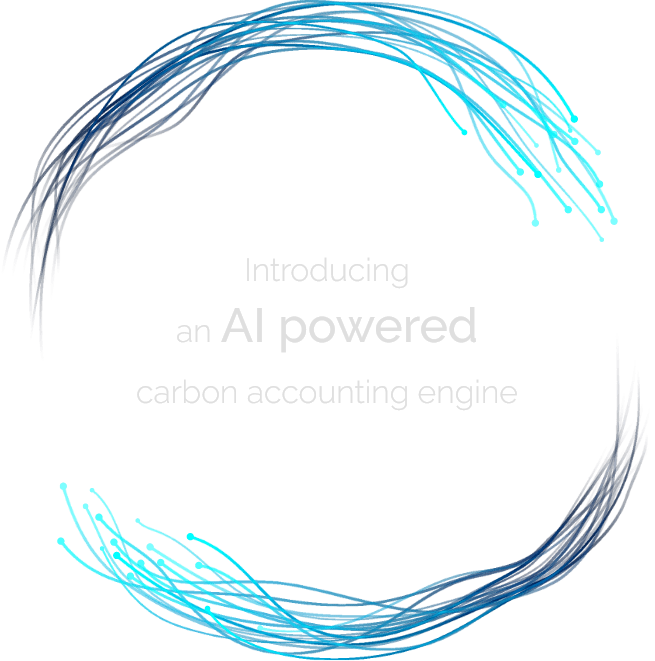
Estimating CO2 emissions from purchased goods and services is notoriously difficult, especially for larger companies where there can be hundreds of thousands of purchases a year. The task is made doubly difficult when the description box of the same purchased item can vary dependent on who placed the order. So it’s great that AI can be put to use for these scope 3 emissions. We spoke to GreenInsight about their AI system and we particularly liked that they encourage engagement with a client’s supply chain. Here’s what they say:
GreenInsight takes your raw data and runs it through three stages. Identification, Cleaning, and Classification. Each of these stages draw from multiple databases with the latest, peer-reviewed data.
Stage 1: Identification
We feed your raw financial data into the GreenInsight AI. This includes organisations, products, services, PO lines, invoices, credit-notes, etc. For this stage GreenInsight makes use of classification systems such as; USA EPA, the UK DEFA, CENA LEEDS, WIODS EXIOBASE, etc.
Stage 2: Cleaning
GreenInsight then begins cleaning the data, converting everything into a common structure that can easily be understood and analysed, whilst removing mistaken entries and combining duplicates. For this, GreenInsight draws on ECOINVENT, Nationale Mileudatabase, Federal LCA Commons, etc.
Stage 3: Classification
Finally, GreenInsight classifies all the products and services based on numerous factors. This is where it works out the carbon factors of each individual product and service. For this GreenInsight pulls on the most used and most accurate carbon data, EC, EF, EPDs, BRE Global, etc.
Outputs
All of this results in three kinds of outputs:
- Identified and cleaned products, services, suppliers, etc.
- Comprehensive carbon footprints for products, suppliers, and services.
- Organisation and departmental CFs, full audit.
As well as producing excellent scope 3 calcs for upstream purchased goods and services, there are some notable co-benefits:
Cost Saving: In any company, unnecessary product and service orders will eventually slip through the cracks. Some examples from our clients include; an NHS trust bulk-buying masks they didn’t need (because they were receiving free masks that year), an organisation paying a neighbouring buildings electricity bills, and another one paying a contractor to come in and sit around for a day once every month (the job had been rendered unnecessary by the actions of another department, but they kept paying, and the contractor was happy to be paid to do nothing). Our clients can typically expect anywhere from 1-5% of quick cash savings as the GreenInsight analysis obviates issues that have been hiding in the procurement system.
Engage with suppliers: It can be difficult to engage with suppliers, and unclear on how exactly to do so. But, this engagement is the only way to truly cut down your scope 3 emissions. By coming to them with hard-data allowing you to ask the right question, and joining forces with others through our coalition initiatives, you will find yourself with many more routes to tackle this problem.
If you want to get to grips with your scope 3 emissions, make big savings, and future-proof your organisation, book a free demo. GreenInsight is run by CO2Analysis and you can book the free demo here: https://www.co2analysis.com/get-started/.
We are currently including a limited free appraisal of your scope 3 and potential savings in this demo. You will find yourself in good company with our previous clients who include NHS Trusts, Local Councils, Universities, SMEs, and major corporations.
Once you have supply chain emissions estimated, speak to SHIFT Environment about the rest of your carbon footprint.
